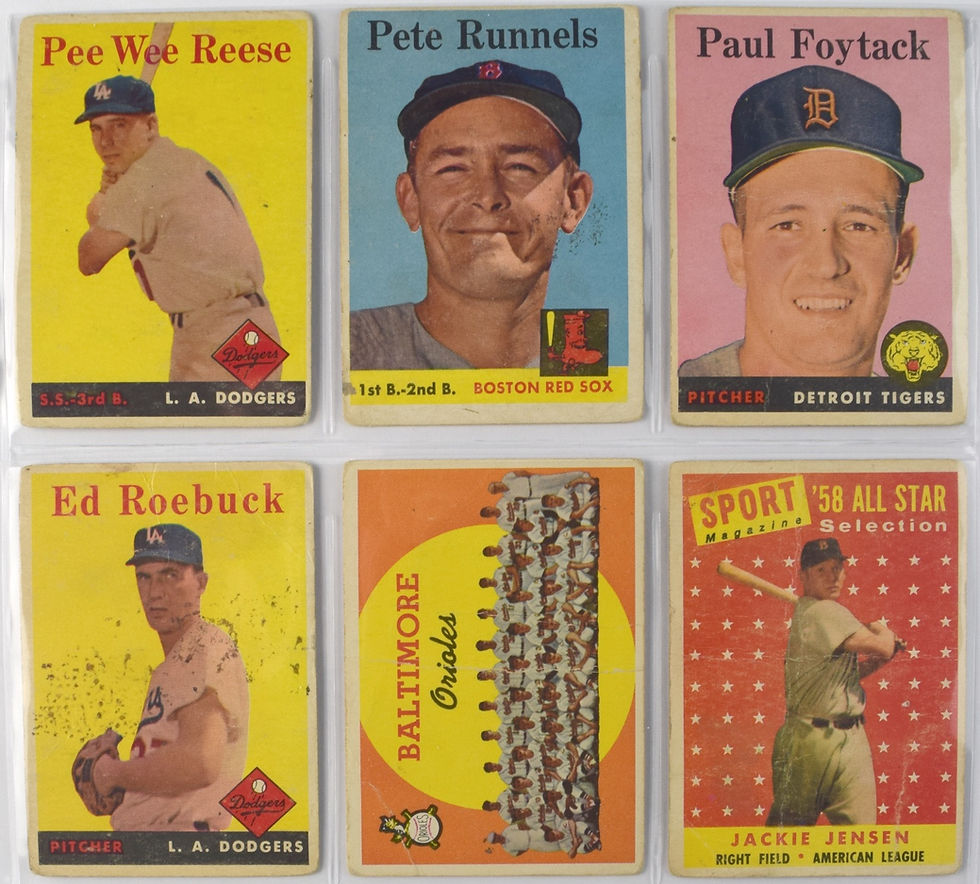Baseball & Sports Cards - What are they Worth? Part I
- Trader Chris Staff

- Aug 21, 2019
- 2 min read

When they were growing up in the 1950s, my father and his friends would go
down to the corner drugstore and pay 5 cents to get a pack of baseball cards. The gum, of course, was what they wanted the most. The baseball cards were merely a consolation prize, to be pitched, flipped, traded, or put in bicycle spokes (as they
made great bike “motors”!)
I’ve heard numerous stories from my father and other Baby Boomers regarding prized card collections in shoeboxes that were tossed out with the trash. If only Grandma had know that shoebox could have potentially paid for a new car or college someday, she may have thought twice before tossing those old cards out.
So what makes one particular sports card more valuable over another? Here are a few key factors that affect the prices of sports cards:
1. Rarity / Age
2. Condition
3. Significance
Each characteristic builds upon one another, so it’s important to understand them before you start hunting for the “diamonds in the rough”.
A particular sports card may be considered rare either because it was released in a very limited quantity or potentially because of its age. Older cards have a tendency to be more valuable than newer cards because they are harder to find, as not as many were produced or have survived over time. When popularity of collecting sports cards exploded in the mid 1980s, and so did the number of cards produced, making them less valuable in general.

There are a handful of modern cards produced each year that are considered valuable immediately, but they tend to be much harder to find than cards collected from the 1970s and earlier. The newer cards that are more valuable are usually rookie cards of star athletes or limited edition cards that are signed or include embedded snippets of memorabilia such as bats, balls, or jerseys.

If you do find a rare card, the next criteria for determining value would be the condition of the card. Factors such a bent corners, centering, and focus contribute to what is known as the card’s “eye appeal”. While bent corners are easy enough to understand, a “centered” card means that the image should be equal distance from all edges of the card, with as little variation as possible. Focus refers to the sharpness of the picture. As printing techniques have changed over the years, so has the criteria for judging how sharp the picture should be.
In my next blog entry I'll highlight some iconic cards from various sports and discuss how to get the most money for your best cards!
Chris DiGiovanna is the President of Trader Chris Consignments.
Chris can be reached at chris@traderchris.biz .



Comments